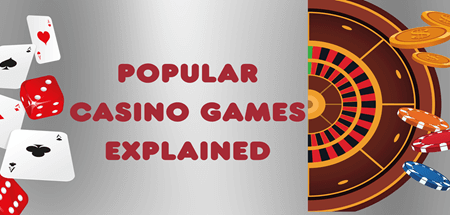 Gambling is a popular activity worldwide, but it can lead to problematic behaviours and even addiction for some individuals. Understanding the psychology of gambling is crucial for designing effective interventions and treatments to help those struggling with gambling disorders. This set of three blog topics explores different aspects of the psychology of gambling, including risk perception and tolerance, reinforcement, cognitive biases. Each post provides insights into a gambler’s mindset and sheds light on the psychological factors that underlie gambling behaviour.
Gambling is a popular activity worldwide, but it can lead to problematic behaviours and even addiction for some individuals. Understanding the psychology of gambling is crucial for designing effective interventions and treatments to help those struggling with gambling disorders. This set of three blog topics explores different aspects of the psychology of gambling, including risk perception and tolerance, reinforcement, cognitive biases. Each post provides insights into a gambler’s mindset and sheds light on the psychological factors that underlie gambling behaviour.
The psychology of gambling is a complex and multi-faceted field that encompasses various aspects of human behaviour, including decision-making, motivation, emotion, cognition, and social influence. To understand the mindset of a gambler, the following need to be considered:
The Role of Risk Perception and Tolerance in Gambling Behavior
Gambling is an activity that inherently involves risk. Whether it’s playing the lottery, betting on sports, or playing casino games, the possibility of losing money is always present. So why do some people engage in gambling more than others? Tolerance and risk perception in gambling behavior and gambling psychology are the answer.
Risk Perception
Risk perception refers to an individual’s subjective assessment of the likelihood and severity of a potential loss. In the context of gambling, risk perception can be influenced by various factors, such as the perceived level of control over the outcome, the size of the potential payout, and the nature of the game itself.
Tolerance for Risk
Risk tolerance is an individual’s willingness to take risks to achieve a desired outcome. In the context of gambling, risk tolerance can be influenced by various factors, such as the individual’s personality traits, past experiences with gambling, and current mood state.
Interplay of Risk Perception and Tolerance for Risk
The interplay between risk perception and risk tolerance can significantly impact an individual’s gambling behavior. For example, an individual with high levels of risk perception but low levels of risk tolerance may be less likely to engage in gambling because they perceive the potential losses to be too great.
On the other hand, an individual with low levels of risk perception but high levels of risk tolerance may be more likely to engage in gambling because they perceive the potential losses to be less significant.
The role of risk perception and tolerance for risk in gambling behavior is complex and multifaceted. Understanding how these factors interact can provide essential insights into why some individuals are more prone to gambling than others. Moreover, by better understanding these factors, we can design interventions and treatments that target the underlying psychological mechanisms driving gambling behavior and ultimately reduce the prevalence of problem gambling.

The Psychology of Gambling in Reinforcement
One of the most potent psychological forces driving gambling behavior is reinforcement. Reinforcement refers to the process by which rewards and punishments influence behavior. In gambling, reinforcement plays a crucial role in motivating individuals to engage in gambling activities and can contribute to the development of problem gambling.
Types of Reinforcement
There are two types of reinforcement: positive and negative. Positive reinforcement is the process by which behavior is strengthened by adding a reward. In contrast, negative reinforcement strengthens a behavior by removing a negative stimulus.
In gambling, positive reinforcement occurs when an individual wins money or receives another reward for their gambling behavior. Negative reinforcement occurs when gambling helps individuals avoid negative emotions like anxiety or depression.
Impact of Reinforcement on Gambling Behavior
Research has shown that reinforcement plays a significant role in motivating individuals to engage in gambling behavior. The prospect of winning money or receiving other rewards is a powerful motivator for individuals to continue gambling, even when they experience losses.
In addition, intermittent reinforcement in gambling can contribute to the development of problem gambling. Slot machines, for example, use a variable-ratio reinforcement schedule, in which the number of times a player has to play before receiving a reward varies randomly. This reinforcement schedule is highly effective at motivating individuals to continue gambling, even when they experience long periods of losses.
Impact of Reinforcement on the Brain
Reinforcement also has a significant impact on the brain. For example, when an individual experiences a reward, such as winning money, dopamine is released in the brain. Dopamine is a neurotransmitter that is crucial in motivation and reward-seeking behavior.
Research has shown that individuals who engage in gambling exhibit similar patterns of brain activation as those who use drugs of abuse. This suggests that the reinforcing properties of gambling can have a similar impact on the brain as drugs of abuse.
The psychology of reinforcement is a powerful force driving gambling behavior. The prospect of winning money or receiving other rewards strongly motivates individuals to continue gambling, even when they experience losses. Understanding reinforcement’s role in gambling helps design interventions targeting its psychological mechanisms, reducing problem gambling.
Cognitive Biases in Gambling: How Our Minds Betray Us
Cognitive biases are inherent flaws in our thinking that can lead us to make irrational decisions. These biases can play a significant role in gambling behavior, influencing how individuals perceive risk, make decisions, and interpret outcomes.
Here are some of the most common cognitive biases that can impact gambling behavior:
The Gambler’s Fallacy
The gambler’s fallacy believes that past events can influence future outcomes. Coin flips are independent events, and previous outcomes do not affect future ones.
In gambling, the gambler’s fallacy can lead individuals to make irrational bets based on their perceived likelihood of an outcome. Betting on a number in roulette because it’s “due” to come up ignores that the odds are the same on each spin.
Confirmation Bias
Confirmation bias is the tendency to seek out information that confirms our pre-existing beliefs and ignore information that contradicts them. In gambling, this bias can lead individuals to make decisions based on anecdotal evidence or superstition rather than objective data.
Playing a slot machine because it’s “lucky” or paid out in the past ignores that the odds of winning on it are the same as any other machine.
Anchoring Bias
Anchoring bias is the tendency to rely too heavily on the first information we receive when deciding. In gambling, this can manifest as individuals basing their bets on the initial odds they see rather than considering the probability of the outcome.
Assuming a horse is a favorite without considering its past performance or other factors can lead to betting on low-odds horses.
Availability Bias
Availability bias is the tendency to overestimate the likelihood of events that are more memorable or vivid in our minds. For example, gambling can lead individuals to overestimate the probability of winning a particular game or event based on recent news or media coverage.
For example, a person may overestimate their chances of winning a lottery jackpot because they have recently heard news stories about winners, even though the odds of winning the lottery are extremely low.
Cognitive biases can significantly impact gambling behavior, leading individuals to make irrational decisions and engage in risky behavior. Understanding biases helps make informed decisions in gambling, promotes responsible gambling, and creates a safer and enjoyable experience.
Understanding these factors leads to effective interventions for individuals with gambling disorders and helps reduce problem gambling rates, improving overall well-being.









